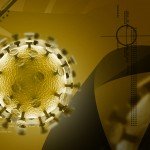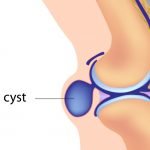Cancer Pain
LINDSAY ADRIAN, ND, FABNO
Over half of people with cancer will experience moderate to severe pain, with some estimates as high as 2/3 of cancer patients.1 Many patients’ pain will not be managed appropriately, leading to impaired sleep, mood changes, fatigue, and other significant impacts on quality of life. There are many validated pain score assessment tools, including some that are even specific to the cancer care setting; however, the important point is to check in regularly with patients about pain and how it is impacting their lives. Pain in the oncology setting has to be worked up thoroughly to ensure that the cause is determined and treatment decisions are appropriate and effective.
The location, intensity, radiation, and quality of the pain are all important parameters in assessment. Pain can be acute or chronic. Acute pain can be generally defined as having a rapid onset and limited duration (ie, weeks), as opposed to chronic pain, which has a more gradual onset and persists or recurs for longer than 3 months.1,2 Typically, acute pain is related to cancer treatment, though can be due to the cancer itself.2
Cancer Pain
Cancer Pain Syndromes
Types of cancer pain syndromes1,2 include:
- Neoplastic damage to bones and joints: Examples include pathological bone fractures, bone metastases, bone marrow invasion and expansion
- Neoplastic damage to viscera, such as obstruction or perforation of a hollow organ or tissue: Examples include GI obstruction, compression of ureter or bile duct, bowel perforation, etc
- Neoplastic damage to soft tissue: Examples include pleural invasion, invasion into muscle and fascia
- Lesions of the nervous system: Examples include solid tumors compressing or invading adjacent nerves, lesions of the spine or brain, etc
- Intratumoral hemorrhage
- Thrombosis: Examples include deep vein thrombosis, pulmonary embolism, etc
- Chemotherapy-induced pain syndromes
- Mucositis
- Peripheral neuropathy
- Palmar-plantar erythrodysesthesia
- Headaches
- Myalgia and arthralgia
- Radiation-induced pain syndromes
- Mucositis – oral mucositis, cystitis, proctitis, etc
- Neuropathy
- Hormone treatment-related pain syndromes
- Dyspareunia
- Arthralgia and myalgia
Pain is classified pathophysiologically as either nociceptive or neuropathic. Nociceptive pain can be further categorized as visceral or somatic depending on what tissues are involved and results from nociceptor activation of threatened tissue.1 All pain caused by damage to or lesion of the somatosensory nervous system is considered neuropathic pain, which accounts for about 1/3 of pain experienced by cancer patients.1,3
Neuropathic Cancer Pain
Neuropathic cancer pain (NCP) can be experienced as hypersensitivities (burning, tingling, and electrical sensation), hyposensitivities (numbness and muscle weakness), or a combination of both, and often does not respond to opiates.4
NCP can be further divided into types based on its etiology4:
- Radiculopathies – affecting the nerve roots
- Plexopathies – affecting the nerve plexuses (brachial, sacral, etc)
- Peripheral neuropathies – affecting the peripheral nerves
- Cranial neuralgia – affecting the cranial nerves (trigeminal neuralgia, glossopharyngeal neuralgia, etc)
- Leptomeningeal seeding
- Spinal cord compression
- Bone lesion pain (mixed somatic and neuropathic)
- Chemotherapy-induced peripheral neuropathy
- Post-surgical pain syndromes
- Radiation injury pain syndromes – plexopathies, myelopathy, etc
CIPN
Chemotherapy-induced peripheral neuropathy (CIPN) is a very common cause of both acute and chronic pain in cancer patients, with recent studies showing 68% prevalence in the first month after chemotherapy, 60% at 3 months, and 30% starting at 6 months after receiving neurotoxic chemotherapy.5,6 This is very important, as it affects both quality of life and treatment outcomes in these patients. A person experiencing significant CIPN may require treatment delays, dose reductions, or drug discontinuation, which can have a significant impact on the management of their disease. The drugs with the highest rates of CIPN include platinum agents, taxanes, vinca alkaloids, and thalidomide derivatives; however, newer drugs can also present with this side effect despite more targeted mechanisms of action.4,5 Symptoms can range from acute – eg, fast onset of acute pain syndrome induced by paclitaxel, or cold allodynia following infusion of oxaliplatin – to chronic, with sensorineural numbness and tingling.4 CIPN is dose-dependent and worsens with subsequent infusions of the chemotherapeutic agent.4 Distribution is typically in the “sock and glove” pattern.
Many studies are underway in an attempt to determine who is at highest risk of developing CIPN and how to prevent it. At this time, we know that individuals with higher risk include those with6:
- Advanced age
- Diabetic or other neuropathies
- Smoking history
- Impaired kidney function
- Exposure to other neurotoxic compounds
- Paraneoplastic antibodies
- Single nucleotide polymorphisms (SNPs) related to any of the enzymes or structures affected by chemotherapy
The pathophysiology of CIPN is dependent on the agent being used; however, the symptoms from CIPN are predominantly due to damage to the dorsal root ganglion neurons or their axons.5 The most common symptoms are sensory loss, acral pain, and sensory ataxia; however, autonomic, motor, and cranial nerve symptoms may also occur.5,6
Table 1. Adverse Effects of Chemotherapeutic Agents
| Type of Agent | Drug Example |
| Platinum compounds | Cisplatin, Oxaliplatin, Carboplatin |
| Damage to the DRG, as well as having direct mitochondrial-damaging effects5 Main mechanism of CIPN may be the accumulation of platinum adducts in the DRG and trigeminal ganglion neurons Oxaliplatin can cause an acute cold-induced dysesthesia in the hands, face, and oral cavity. This is thought to be caused by effects on the ion-gated channels of the DRG and augmented by the oxalates liberated when it is activated to reactive platinum complexes.5,6 “Coasting” phenomenon is unique to these compounds (specifically cisplatin and oxaliplatin). CIPN may worsen for several months following discontinuation of therapy.5,6 | |
| Taxanes | Paclitaxel, Docetaxel |
| Associated with an acute pain syndrome resulting in muscle pain; it is not neuropathic, but is correlated with the generation of CIPN and mimics its occurrence5 Mechanism is not fully understood; however, the agent seems to damage DRG via disruption of the microtubules of the nerve axons as well as damage the mitochondria5 May also interrupt signaling between the nerve endings and epidermal basal keratinocytes via MMP-135 | |
| Vinca alkaloids | Vinblastine, Vincristine, Vinorelbine |
| Microtubule destabilization, affecting DRG axon signaling5 | |
| Thalidomide – and derivatives | Lenalidomide, Pomalidomide |
| Dysregulation of neurotrophins, causing neuronal cell death6 Anti-angiogenic effects, leading to ischemia in the neurons and irreversible neuropathies6 |
Naturopathic Management of Cancer Pain
Much of cancer pain management is geared toward actively killing cancer cells and reducing tumor burden. However, a well-coordinated pain management plan must be integrative in nature and use multiple tools to target the cause, and from multiple angles. There is no “one size fits all” or even algorithmic approach because each patient presents with a unique set of variables, and the totality of a patient’s case presentation must be taken into consideration; many of our patients present with 2 or more of the various pain syndromes listed above. It is important to support our patients by consulting with compassionate and knowledgeable pain management specialists, radiation oncologists, and medical oncologists, to ensure that our patients are receiving the most appropriate conventional care in addition to adjunctive integrative support.
That being said, there are some therapeutics that have been well researched and established as effective tools for pain management that can be safely incorporated into an integrative plan.
Acupuncture
There is evidence for acupuncture in the management of cancer pain and CIPN, among other quality-of-life parameters, such as sleep, hot flashes, and energy.
The National Cancer Institute’s PDQ information summary on acupuncture7 describes the effects of acupuncture on cancer pain as follows:
The NIH Consensus Panel concluded that “acupuncture can cause multiple biological responses,” local and distal, “mediated mainly by sensory neurons …within the central nervous system.” Acupuncture “may also activate the hypothalamus and the pituitary gland, resulting in a broad spectrum of systemic effects,” including “alterations in peptides, hormones and neurotransmitters and the regulation of blood flow.” Recent studies show the effect of acupuncture on chronic inflammatory pain. Evidence suggests that acupuncture operates through the autonomic nervous system to balance the sympathetic and parasympathetic systems and suggests that the anti-inflammatory effects of acupuncture are mediated by its electrophysiologic effects on neurotransmitters, cytokines, and neuropeptides. Many studies provide evidence that opioid peptides are released during acupuncture and that acupuncture analgesia is mediated by the endogenous opioid system. (National Cancer Institute, 2020)7
Reiki and Healing Touch
There have been small but significant human trials on the use of reiki and healing touch in the cancer setting to reduce pain and improve quality-of-life parameters. A small study on children with cancer undergoing treatment with hematopoietic stem cell transplants found a significant reduction in perceived pain after reiki treatments.8 In a slightly larger study, conducted across many cancer types and pain syndromes, an approximate 30% reduction in pain was reported by patients following healing touch treatment.9
Exercise
The benefits of exercise (eg, Pilates, physical therapy, walking, dancing, aerobic- and strength-based exercise) are wide-ranging and well established, yet many patients still do not understand the impact that exercise can have on their symptoms. It behooves us as physicians to reinforce its benefits and to provide the support our patients need to incorporate physical activity as an integral part of their health plan.
Specific research validating the benefits of exercise in cancer pain includes:
- Breast cancer – reduction of post-surgical pain,10,11 pain during chemotherapy and radiotherapy/radiation12
- Head and neck cancer – reduction of pain and improved mobility following surgery13
- Solid tumors during active treatment – reduction of pain with walking intervention14
- Cancer survivors – reduced pain intensity with higher levels of physical activity15
MBSR, Yoga, Tai Chi, Meditation
The amount of research into the benefits of mindfulness-based stress reduction (MBSR) interventions has taken off in the last 5 years. Results of a systematic review and meta-analysis, published at the end of 2019, show a statistically significant improvement in pain and quality-of-life markers among cancer patients participating in mindfulness-based interventions.16
Vitamin D Adequacy
Many cancer patients have suboptimal vitamin D levels at diagnosis.17 Additionally, cancer treatments deplete vitamin D, specifically chemotherapy.18 There is evidence that suboptimal levels of vitamin D are associated with increased need for pain medications and that repletion of vitamin D can result in a statistically significant reduction in the use of pain medications within 1 month.19
Specific interventions during chemotherapy should be utilized by practitioners with advanced training in this area, to ensure that drug-nutrient and drug-herb interactions do not interfere with the efficacy of treatments.
Case Example
KH, 47-year-old woman with BRCA1 mutation High Grade Serous Ovarian Cancer (HGSOC) post optimally debulked Total Abdominal Hysterectomy with Bilateral Salpingo-Oophorectomy (TAH BSO), began chemotherapy with paclitaxel and carboplatin, to be administered on 21-day cycles.
The first cycle began August 22, 2019, and by August 25th she had developed sore knees, ankles, and feet. Magnesium was started to support ion channels, in an attempt to reduce CIPN of carboplatin; anti-inflammatory curcumin and proteolytic enzymes were also started, to reduce paclitaxel-induced pain. During the second cycle of treatment, KH developed mild tingling and numbness in her feet, which improved before the third cycle.
KH had regular Reiki sessions and got back into her meditation practice following the initial lapse that was caused by the diagnosis and initial phases of her cancer treatment. Each chemotherapy treatment resulted in a flare of the acute paclitaxel pain, around day 3 after the infusion, and the numbness and tingling returned in her hands and feet with each round. However, she did not require any dose reductions, and the symptoms receded each time before the next treatment. She was also on a comprehensive integrative protocol with intravenous and oral herbs and nutrients that is beyond this article to outline. KH is a very chemically sensitive patient and was anticipated to not manage chemotherapy well. She was very pleased with the mild degree of its effects and her speedy recovery.
References:
- Caraceni A, Shkodra M. Cancer Pain Assessment and Classification. Cancers (Basel). 2019 Apr 10;11(4). pii: E510. doi: 10.3390/cancers11040510.
- Portenoy RK, Ahmed E. Cancer Pain Syndromes. Hematol Oncol Clin North Am. 2018;32(3):371-386.
- Reis-Pina P, Acharya A, Lawlor PG. Cancer Pain With a Neuropathic Component: A Cross-sectional Study of Its Clinical Characteristics, Associated Psychological Distress, Treatments, and Predictors at Referral to a Cancer Pain Clinic. J Pain Symptom Manage. 2018;55(2):297-306.
- Yoon SY, Oh J. Neuropathic cancer pain: prevalence, pathophysiology, and management. Korean J Intern Med. 2018;33(6):1058-1069.
- Staff NP, Grisold A, Grisold W, Windebank AJ. Chemotherapy-induced peripheral neuropathy: A current review. Ann Neurol. 2017;81(6):772-781.
- Zajączkowska R, Kocot-Kępska M, Leppert W, et al. Mechanisms of Chemotherapy-Induced Peripheral Neuropathy. Int J Mol Sci. 2019 Mar 22;20(6). pii: E1451. doi: 10.3390/ijms20061451.
- National Cancer Institute. Acupuncture (PDQ®)—Health Professional Version. Updated January 17, 2020. Available at: https://www.cancer.gov/about-cancer/treatment/cam/hp/acupuncture-pdq. Accessed April 15, 2020.
- Zucchetti G, Candela F, Bottigelli C, et al. The Power of Reiki: Feasibility and Efficacy of Reducing Pain in Children With Cancer Undergoing Hematopoietic Stem Cell Transplantation. J Pediatr Oncol Nurs. 2019;36(5):361-368.
- Gentile D, Boselli D, O’Neill G, et al. Cancer Pain Relief After Healing Touch and Massage. J Altern Complement Med. 2018;24(9-10):968-973.
- Wilson DJ. Exercise for the Patient after Breast Cancer Surgery. Semin Oncol Nurs. 2017;33(1):98-105.
- Espíndula RC, Nadas GB, Rosa MID, et al. Pilates for breast cancer: A systematic review and meta-analysis. Rev Assoc Med Bras (1992). 2017;63(11):1006-1012.
- Reis AD, Pereira PTVT, Diniz RR, et al. Effect of exercise on pain and functional capacity in breast cancer patients. Health Qual Life Outcomes. 2018;16(1):58.
- Do JH, Yoon IJ, Cho YK, et al. Comparison of hospital based and home based exercise on quality of life, and neck and shoulder function in patients with spinal accessary nerve injury after head and neck cancer surgery. Oral Oncol. 2018;86:100-104.
- Griffith K, Wenzel J, Shang J, et al. Impact of a walking intervention on cardiorespiratory fitness, self-reported physical function, and pain in patients undergoing treatment for solid tumors. Cancer. 2009;115(20):4874-4884. [Correction in: Cancer. 2013;119(9):1762].
- Maindet C, Burnod A, Minello C, et al. Strategies of complementary and integrative therapies in cancer-related pain-attaining exhaustive cancer pain management. Support Care Cancer. 2019;27(8):3119-3132.
- Cillessen L, Johannsen M, Speckens AEM, Zachariae R. Mindfulness-based interventions for psychological and physical health outcomes in cancer patients and survivors: A systematic review and meta-analysis of randomized controlled trials. Psychooncology. 2019;28(12):2257-2269.
- Calmarza P, Sanz París A, Prieto López C, et al. Vitamin D levels in patients with recent cancer diagnosis. Nutr Hosp. 2018;35(4):903-908. [Article in Spanish]
- Isenring EA, Teleni L, Woodman RJ, et al. Serum vitamin D decreases during chemotherapy: an Australian prospective cohort study. Asia Pac J Clin Nutr. 2018;27(5):962-967.
- Helde-Frankling M, Höijer J, Bergqvist J, Björkhem-Bergman L. Vitamin D supplementation to palliative cancer patients shows positive effects on pain and infections–Results from a matched case-control study. PLoS One. 2017;12(8):e0184208.

Lindsay Adrian, ND, FABNO, practices at Port Moody Health, just outside of Vancouver, BC. Her practice focuses are cancer and complex chronic disease. She regularly attends conferences and continuing education events around the world and is always seeking to remain on the cutting edge of what is available to assist her patients. Dr Adrian is part of the conference content committee for the Oncology Association of Naturopathic Physicians, as well as the examination committee for the College of Naturopathic Physicians of BC. In her spare time, she enjoys playing soccer and spending time with her husband and 3 kids.









